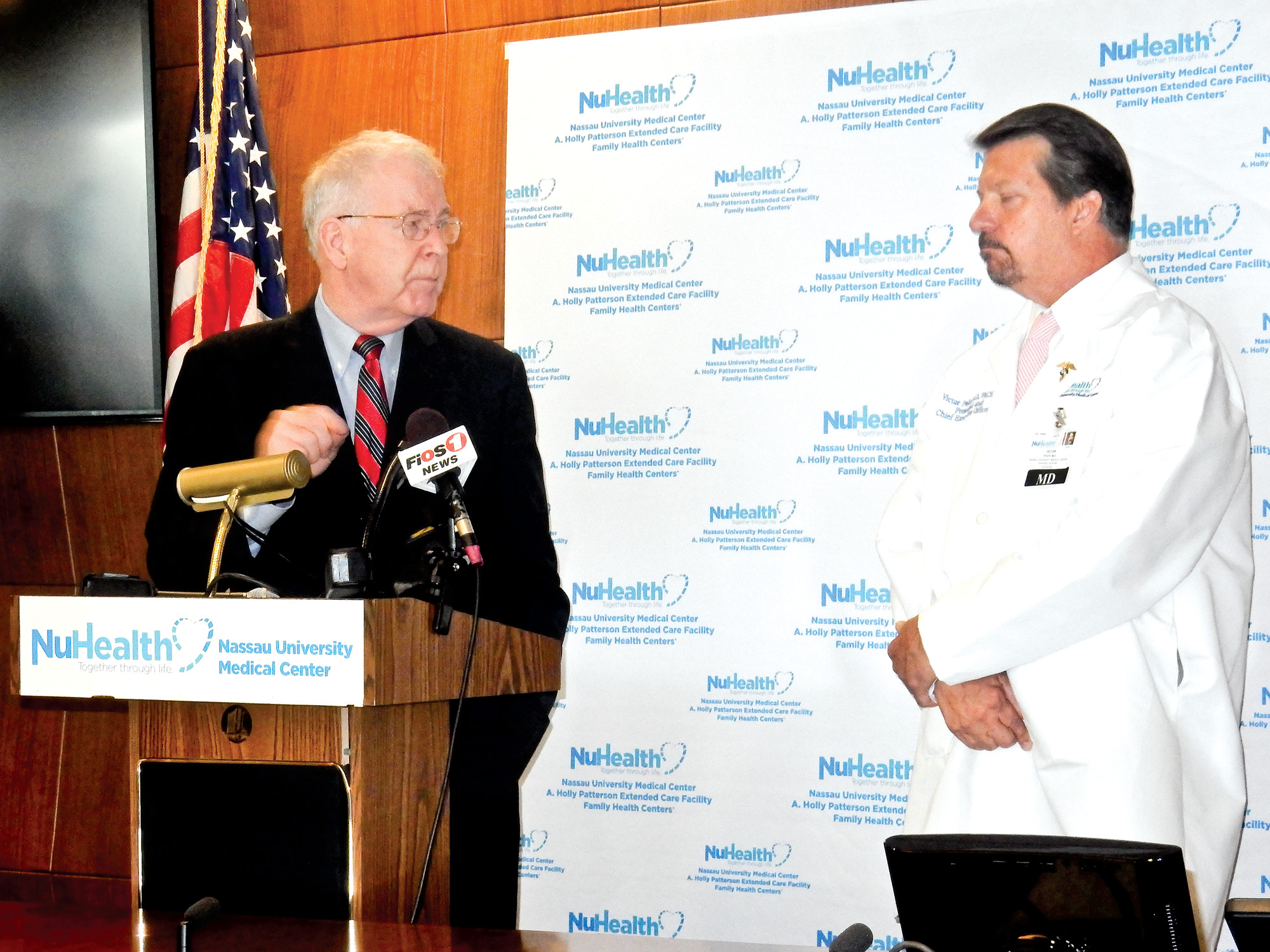A plan to reform health care statewide
State program could net NUMC millions
Nassau University Medical Center President Dr. Victor Politi and State Sen. Kemp Hannon announced on June 29 the hospital’s participation in an ambitious statewide incentive plan that aims to reform the health care system by focusing on greater care for at-risk, low-income patients to reduce “avoidable hospitalizations,” thereby lowering state Medicaid costs. If successful, the program could net hundreds of millions of dollars in state funding for Long Island and Queens hospitals over the next five years, portions of which would go the NUMC.
The Delivery System Reform Incentive Program, overseen by the state Department of Health, could fund as much as $8 billion in federal savings to medical institutions participating in the program. The key to the program, the officials said, involves collaboration between hospitals, health homes, nursing facilities, diagnostic treatment centers behavioral health providers and home care agencies in order identify specific communities that are being underserved.
The NUMC will be teaming up with other hospital systems in Nassau County and Queens, including the North Shore-LIJ Health System, the Catholic Health Services of Long Island, and St. John’s Episcopal Hospital in Far Rockaway.
The program, Hannon said, is a result of negotiations between New York state and the federal government to decrease the cost of Medicaid statewide, a cost Hannon said “is something we can not afford.” The idea, he said, is to identify low-income patients who can’t afford health care — and often don’t receive care until they wind up in the emergency room — and treat them earlier. Some five percent of patients, Hannon estimated, consume 50 percent of state Medicaid money. Reducing their emergency room visits, he said, will save hospitals money.
“If you can address their medical needs, you can drive down the need for spending more and more money,” Hannon said. “It’s going to a fundamental premise for how we address health care. The very stated initial purpose is: let’s reduce the number of hospital admissions.”

 47.0°,
Fair
47.0°,
Fair 




